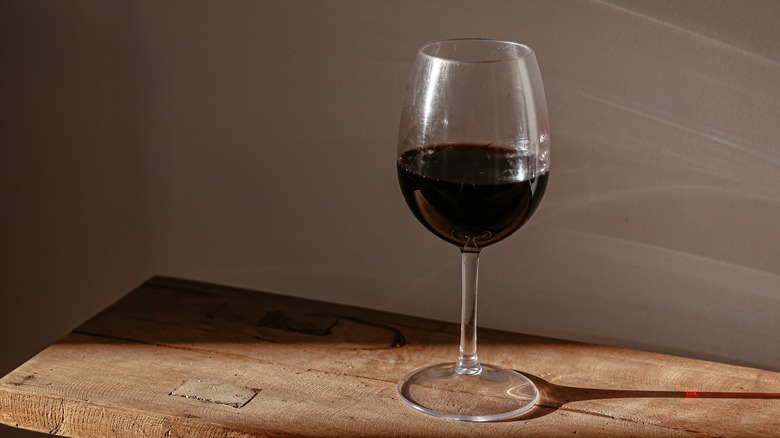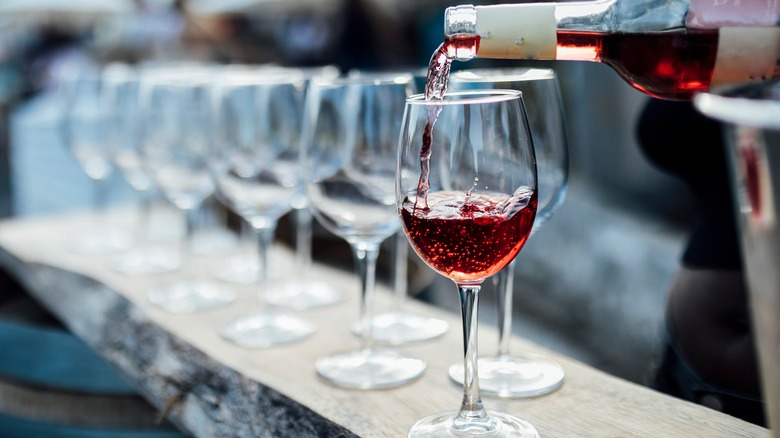Why You Should Pay Closer Attention To The Color Of Red Wine
Red wine is red — or is it? The truth is that red wines fall on a spectrum of hues. Pinot Noir, Syrah, Nebbiolo, or an aged Sangiovese will all range drastically in pigment, but this can often give wine drinkers a bunch of clues about a wine's profile, which is why you should definitely pay closer attention to color.
Wine is basically fermented grape juice. But, while red grapes can make white wines, white grapes can't technically do the same (orange wines are, well, orange). As Food & Wine explains, during the winemaking process, red wine is created by macerating the juice of red grapes with their skins. Depending on how long the skins remain in contact with the vino will determine the wine's final shade.
When it comes to evaluating a wine, stemware is detrimental. Wine Enthusiast recommends opting for stemmed glasses like a tall and tapered Bordeaux glass or a wide bowl Burgundy glass — both shapes will work to concentrate aromas, and prevent any heat from your hands from being transferred to the wine. Once the wine is poured, Decanter suggests examining the color of the liquid (ideally, in front of a white background) by tilting the glass. Observing the hue can give drinkers a hint regarding the style, age, and even taste of the wine.
Color might help you decipher drinkability
Red wine can be ruby, purple, garnet, tawny, or even onyx. However, Punch shares that color won't necessarily equate to intensity, as a wine's character depends on whether it was macerated with thin or thick-skinned grapes, where the fruit was grown, and how the wine was produced and aged. As for density, the opacity of color isn't nearly as important as vibrancy.
Wine Folly explains that as red wines age, the concentration of color pigment (anthocyanin) diminishes, which can cause the wine to morph into a brickish brown shade — information that's useful in determining whether a wine has prematurely aged. Wiens Cellars shares that if that bottle of red wine you opened is starting to dull and lean towards tawny, it's wise to drink it soon, whereas a brighter, ruby wine can keep for a few days longer.
Despite the fact that color can also indicate the potential of a vino's age ability, many of the wines available to us tend to have a shorter lifespan of about five years with the exceptions of higher-priced wines or those made with high tannin or high acid grape varietals (via VinePair).

